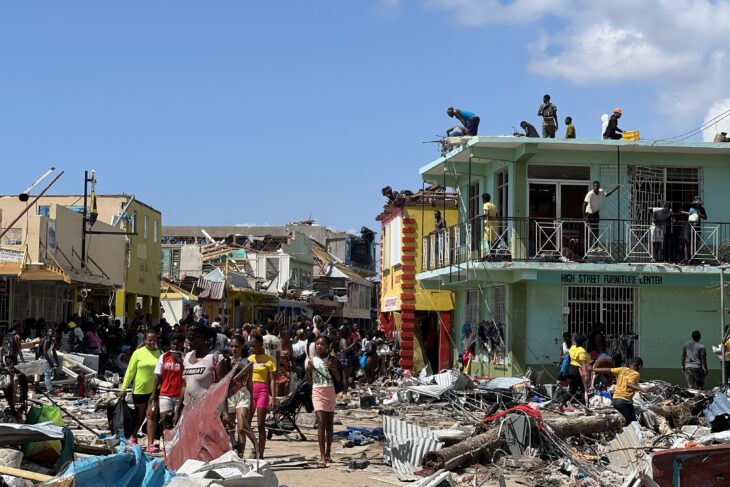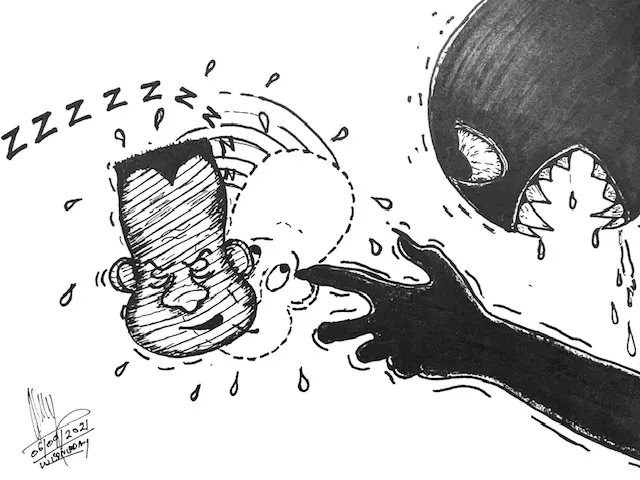The month of August marks the centenary for one of the most remarkable human rights declarations prepared by international civil society during the 20th century: The Declaration of Rights of the Negro Peoples of the World.
Drafted and adopted in New York at the first annual convention of Marcus Garvey’s Universal Negro Improvement Association (UNIA), it laid out many themes that have continued to shape human rights debates up until today. A forgotten document, its story deserves to be brought to light — perhaps more than ever in a year that has brought racial inequalities and the Black Lives Matter movement to the forefront of international political debate.
Harlem, August 1, 1920. Liberty Hall is brimming with excitement. Reportedly 12,000 people are in attendance. Jamaican-born Marcus Garvey, who had recently founded the UNIA, takes the podium. At this first ever annual convention, he explains that collectively they have spent the last two and a half years spreading “the doctrines of the UNIA to the four corners of the world”.
Responding to the national and global politics of the post-war moment, a leading UNIA figure states: “We fought, bled and died on the battle plains of France and Flanders that the world might be made safe for democracy. The reality that Blacks face at this moment, however, is a far cry from this aspiration. To all those gathered Garvey outlines the vision for the coming days:
“This convention of the UNIA is called for the purpose of framing a Bill of Rights for the Negro Race. We shall write a constitution within this month of August that shall guide and govern the destiny of 400 million Negroes of the world.”
On the second day of this month-long convention more than 20,000 gather at Madison Square Garden in New York City. A parade fills the streets of Harlem on 2 August where the participants carry banners with inscriptions such as “Down With Lynching”, “Africa Must Be Free”, “The Negro Gave Civilisation to the World”, and “United We Stand for African Liberty”. One rather unique banner carries a historically informed reference to the Haitian Revolution putting the coloniser in his place: “Toussaint L’Ouverture was an abler soldier than Napoleon.”
The UNIA was feeling the force of a profoundly racist society and these demonstrations stimulated media coverage; not to mention the continued attention of the FBI who had been monitoring Garvey, intent on undermining him and his movement.
After America entered World War I in 1917, there had been a sharp increase in violence against black people. In 1918 alone, there were more than 100 lynchings reported in the United States, in addition to race riots and massacres targeting African-Americans such as the one in East St Louis in 1917. In the aftermath of the First World War, empires were falling in Europe while imperial power was being consolidated elsewhere. Independence movements in Ireland, China, Egypt, India and Eastern Europe did, however, take inspiration from US President Woodrow Wilson’s call in 1918 for self-determination as a principle.
The UNIA responded to these developments by inscribing itself as a movement for African independence challenging both imperial rule abroad and brutality and oppression in the United States. Garvey argued that the UNIA convention consisted of “the delegates of the 400,000,000 Negroes”. The agenda had a threefold purpose which demonstrated the scope of their ambition: to discuss “the great problems that confront the Negro; … framing a bill of rights for the Negro peoples of the world; … [and] laying plans for the redemption of the great continent of Africa.” The convention was to be a political manifestation that would send a message to the world that black people were mobilising for their rights and for their freedom.
The convention’s first week was focused on speeches by delegates about the discriminatory and devastating living conditions that black people faced in the United States, the Caribbean and across Africa. They were enlightening for the participants, but they also served another important purpose: to ground the drafting of the Declaration in lived experiences:
“We want this convention to clearly understand the universal Negro situation …We can only understand it when the representative from Georgia tells of the real conditions in Georgia; when the representative from Mississippi tells of the real conditions in Mississippi; when the representative from Basutoland or any other part of Africa tells of the real conditions in Africa. And so with the various islands of the West Indies, and South and Central America,” explained Garvey.
Articulating and drafting these aims began in the second week. The effort to do so was a collective one evidenced in the sizable number of people who signed the final declaration. The UNIA that Garvey had established was a multi-faceted undertaking. While there is a larger debate about Marcus Garvey’s complex character and legacy there can be little doubt about his and the UNIA’s historical significance.
The declaration was a project of black empowerment through human rights. If we are interested in a fuller appreciation of 20th-century global history and politics — especially as it relates to questions of race, imperialism, black internationalism, decolonisation and democracy — this particular moment in history may illuminate a major theme that begs further exploration, namely that of human rights. As Garvey explained to the crowd:
“We are here because we are tired of being a suffering people. We are here because we desire our liberty. We believe that all those human rights that are common to the rest of mankind should also be enjoyed by us.”
For whatever reason, there have been relatively few references to this moment in history. The Declaration on Rights of the Negro Peoples of the World is completely ignored in international human rights histories, which has otherwise been among the most dynamic fields of study within the discipline of history over the last decade. The 1920 declaration is also ignored in the relatively comprehensive scholarship on Marcus Garvey. Occasionally, the declaration has received a noteworthy assessment in a one-line statement by a scholar only to be overlooked immediately after without exploring the actual contents in greater detail.
In 2006 the historian Robert Trent Vinson wrote, “The ‘Declaration of Rights of the Negro Peoples of the World’ articulated the grievances, aims, objectives and guiding philosophy of the UNIA as an anti-white supremacist movement.” In referring to the declaration, one of the world’s leading Garvey scholars, Rupert Lewis, argued that “Garveyism should be assessed in relation to its adherence to this democratically determined document”. Surely such a foundational document deserves more careful attention, especially since, as Tony Martin has noted, Marcus Garvey “organised and built up the largest black mass movement in Afro-American history”.
The vision of the 1920 Declaration shows that well before the 1948 UN Universal Declaration of Human Rights, the linking of the broad categories of rights (civil, political, economic, social and cultural rights) was vital for political projects concerned with liberty, justice, equality, dignity and non-discrimination. In that sense, it reads as a template for the much more heralded 1948 UN Declaration. The 1920 Declaration may not be as polished — the UN did also take two years to draft the Universal Declaration whereas the UNIA spent two weeks — but it can help us reimagine how we think about the history of human rights as an international project in the 20th century.
As a political and intellectual achievement, the 1920 Declaration is noteworthy both for its content and for the way it straddles black nationalism and internationalism. It is universalist in outlook while at the same time containing mottos such as “Africa for the Africans” and proclaiming self-determination as a right.
The ‘Magna Carta of Negroes of the World’
The document itself contains a preamble and 54 articles. The preamble calls out racial discrimination, the lack of public trials and equality before the law for Black people, lynchings, racial violence against women, colonialism, taxation without representation and a lack of voice in making and administrating laws in the American South.
The preamble also addresses a range of social and economic rights through a focus on discrimination in health, education, employment and wages. The 54 articles elaborate on the inhuman treatment that Black people were facing around the world. Several articles show that the Declaration was vehemently anti-slavery and anti-torture. With Article 17, the drafters of the Declaration made a powerful indictment which implicitly was directed against the United States:
“Whereas the lynching, by burning, hanging, or any other means, of human beings is a barbarous practice and a shame and disgrace to civilisation, we therefore declare any country guilty of such atrocities outside the pale of civilisation.”
The declaration also states that black people should have the right to elect their own representatives in legislatures and courts of law and to receive “even-handed justice before all courts of law” as well as they, “like any other race, should be governed by the ethics of civilisation, and … not be deprived of any of those rights or privileges common to other human beings.” Articles 3, 4 and 5 show an emphasis on equality and the rule of law. The declaration called for “freedom of the press” and “freedom of religious worship” and demanded “free speech universally for all men” (Articles 24, 25 and 28).
There was a rigour that was put into crafting such a well-structured and comprehensive document where not only civil and political rights were represented but also social and economic rights. It also reflected a legal structure recognizable from constitutional documents.
As regards social and economic rights, there are four articles focused on the right to education and non-discrimination in access, including Article 30 stating “We demand the right of an unlimited and unprejudiced education for ourselves and our posterity forever.” Two articles focused on the right to work and non-discrimination in employment, by declaring it “inhuman and unfair to boycott Negroes from industries and labour in any part of the world.” They were fighting for their livelihoods and for their children’s future here.
An article focused on health was also included, representing a community and health care practitioner perspective by declaring it was “a serious impediment to the health of the race to deny to competent licensed Negro physicians the right to practice in the public hospitals of the communities in which they reside for no other reason than their race and colour.”
Upon the reading of the full text on August 15 at the convention, the Declaration was met with “uproarious applause … cheering and shouting … [and] frantic joy” for what was also described as the “Magna Carta of the Negroes of the world.”
The South African connection
And so, 100 years later, the complicated question presents itself: what is the legacy of the declaration?
In South Africa, at least one interesting connection may be traced to William Jackson, President of the UNIA in Cape Town. He was among the speakers at the ANC Conference in May 1923, where the ANC drafted its so-called “African Bill of Rights” — a short “bill” consisting of five articles. This 1923 Bill of Rights is seen as a starting point for the ANC’s continued engagement with human rights during the 20th century that would then be elaborated in the 1943 African Claims document with its expanded Bill of Rights and the 1955 ANC Freedom Charter.
The clear thematic overlap between the 1920 Declaration and the 1923 Bill of Rights is worth noting. Both documents covered the right to land, right to liberty, justice and equality “in the eyes of the law”, equality of treatment, equality of citizenship, the right to political representation in the legislative bodies and to participate in the management of administrative affairs and they both declared that there could be no “taxation without representation”.
Of course, beyond these commonalities, the ANC had its own rights tradition as Tembeka Ngcukaitobi has captured so well in his 2018 book The Land is Ours. South Africa’s First Black Lawyers and the Birth of Constitutionalism. But the substance and the overlap in the human rights thinking, the transnational linkages between movements fighting for the rights of black people and their challenge to global politics across the 20th century all point to seeing the documents in a larger context.
In 1986, Amnesty International organised the “Conspiracy of Hope” concert tour with a range of artistes assembled to raise funds for its human rights work. It was one of the largest human rights advocacy events during the 1980s. From the stage Bob Geldof and Steven van Zandt performed Bob Marley’s Redemption Song:
“Emancipate yourself
from mental slavery
None but ourselves can free our minds.”
Marley borrowed those words directly from a Marcus Garvey speech. However, Garvey’s aims extended far beyond escaping mental slavery. Indeed, those who gathered and drafted the Declaration in 1920 sought so much more. Their efforts merit a legitimate place in the much wider scholarship on international human rights as an intellectual achievement in its own right and as an expression of early 20th century global civil society human rights activism that speaks to some of the most profound political issues that the international community has had to face over the last century — issues that remain pervasive and persistent in their call for resolution today.
As #BlackLivesMatter protests take place amid widespread poverty, economic inequality and the disproportionate deadly impacts of COVID-19, Garvey’s words from a century ago call out:
“There is no race or nation in the world that can intimidate the present day Negro. We refuse to beg or cringe any longer; we demand our rightful place in the sun.”
The 1920 Declaration deserves to come into the light.
— Steven LB Jensen is a senior researcher at The Danish Institute for Human Rights. He is the author of the prize-winning book The Making of International Human Rights. The 1960s, Decolonisation and the Reconstruction of Global Values (Cambridge UP). He is currently working on a book on the long history of social and economic rights.



